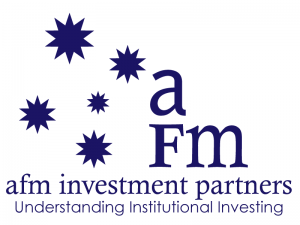Indonesia’s economic and geopolitical clout is on the rise. After the fall of long-ruling autocrat Suharto in 1998 and the devastation of the Asian Economic Crisis that same year, the country has since emerged as the world’s third-largest democracy and burgeoning economic power. Last week, the Indonesian presidential election — and the drama surrounding its outcome — thrust the archipelago nation into the spotlight.
In recent times, Indonesia and Australia have endured a complicated political and diplomatic relationship, which has often clouded public perceptions of our northern neighbour despite its vast potential. For instance, many Australians would be unaware that Indonesia’s economy is on track to overtake Australia’s economy in GDP terms, and is projected to become the fourth largest globally by 2040.
Australia could play an important role in the country’s transformation, which provides an investment opportunity for our superannuation funds, as well as our energy, mining and infrastructure companies. Indonesia has abundant natural resources (especially in agriculture, gas, hydrocarbons, oil, rubber and timber), a skilled workforce and relatively consistent per annum GDP growth of 6 per cent in the decade from 2004-2014. While crude production is in decline in the country, natural gas is increasing in importance. And although coal production dominates power generation (after Australia it is the second largest coal exporter), as is the case in Australia, renewable energy is becoming more important and increasingly encouraged by government.
Based on the trends of the past decade, Indonesia’s economy could double to $US1.758 trillion in the 16 years to 2030. Of course, this growth is dependent on its productivity, income inequality and infrastructure woes being resolved.
Australian resource companies, banks and large superannuation funds should be looking to capitalise on such fast-paced growth. Indonesia is expected to be the seventh largest economy by 2030, and the fourth largest by 2040. For Australia, this means a booming middle class that will be looking to spend. Its consuming class currently sits at 74 million, but this is tipped to jump to between 140-170 million by 2030.
Superannuation funds with existing infrastructure portfolios in Australia, the US and Europe are well-placed to invest in Indonesian ports, airports and toll roads. With population growth of 3.7 million people a year, the population is expected reach in excess of 280 million by 2030. The vast majority – 71 per cent – will live in urban areas and produce 86 per cent of GDP. Jakarta will remain the most populated city, but urbanisation is also resulting in swift growth in other cities, with Batam, Pekanbaru and Makassar growing at about 7 per cent per annum.
Developing infrastructure to keep pace with population growth will be a significant challenge. Australia, with its pool of superannuation savings, infrastructure expertise and our skilled investment houses has an opportunity to fund and manage Indonesia’s needs alongside local firms. One such opportunity is Tanjung Priok, the main international port which currently has a capacity of ships of 50,000 deadweight tonnes (DWT) compared to Singapore at 150,000 (DWT).
Other nations are already investing in Indonesia. Chinese state-owned railway and infrastructure investors have suggested they will spend $5bn on coal-related and passenger rail such as in Central Kalimantan and South Sumatra and on an express train to the main Jakarta airport (Soekarno-Hatta). Meanwhile, the Japanese government has suggested high speed rail lines between Jakarta and Bundung. Australia should be following China and Japan’s lead.
Australia’s expertise in hydropower also puts it in a unique position. The Indonesian government has set an electrification target of 90 per cent of population by 2020, with 20 per cent of supply coming from hydro. Indonesia has abundant river hydro opportunities, and with 60 million people currently without power, Australian expertise such as that developed in the Snowy Mountains, Tasmanian Hydro or Pacific Hydro would be useful for much needed environmentally-sensitive hydro power generation.
With the potential of a $US9 trillion economy and 280 million people by the year 2030, Indonesia could achieve significant status within ASEAN well before the middle of this century. The next few years will be crucial for the Indonesian people and whether or not their aspirations for a better life in a fairer, richer and globally influential nation is to become a reality. If there is decisive leadership at the presidential level, alongside ongoing prudent economic and political reform, Australia will find it increasingly difficult to ignore the rising power next door.
By John Donovan –
businessspectator.com.au